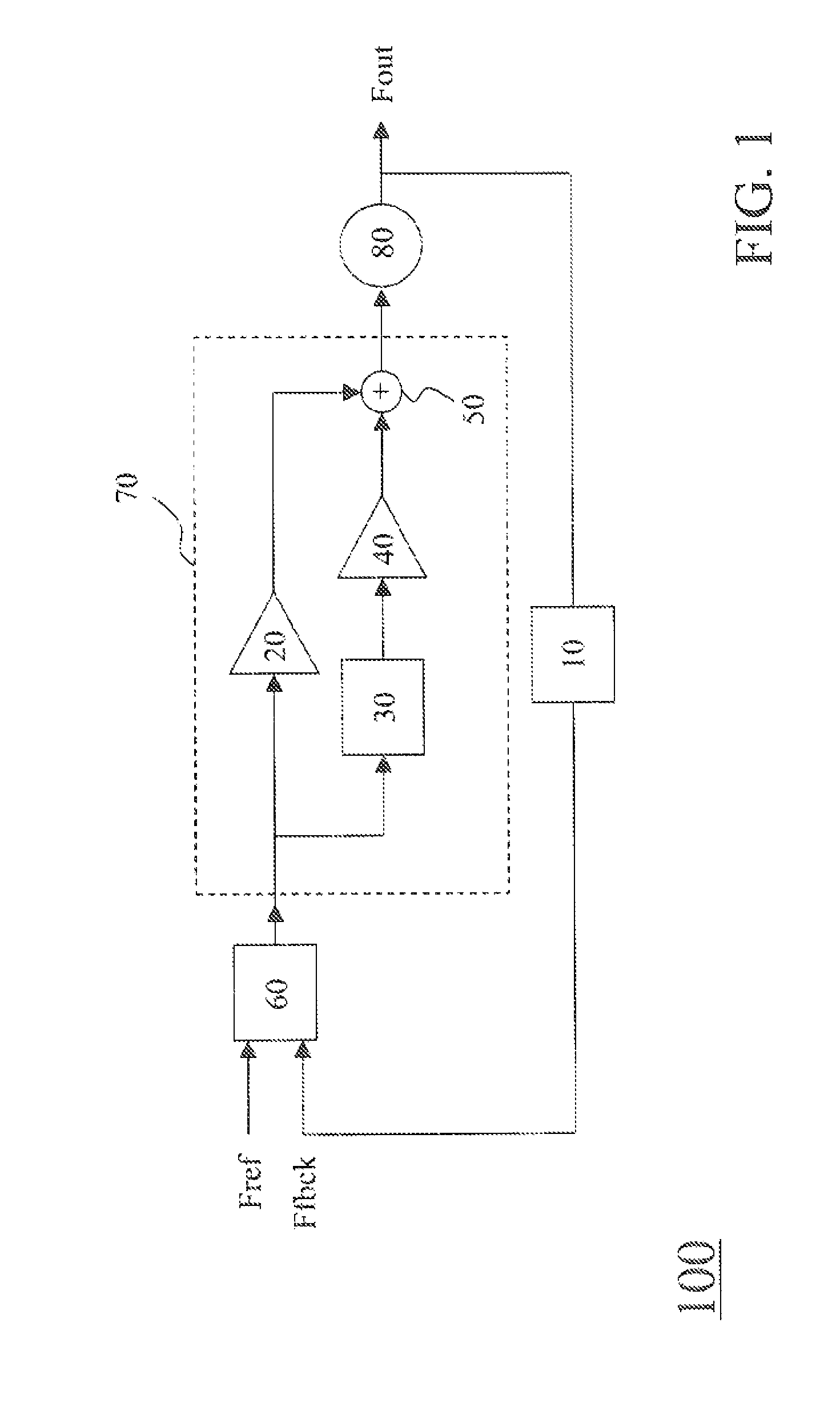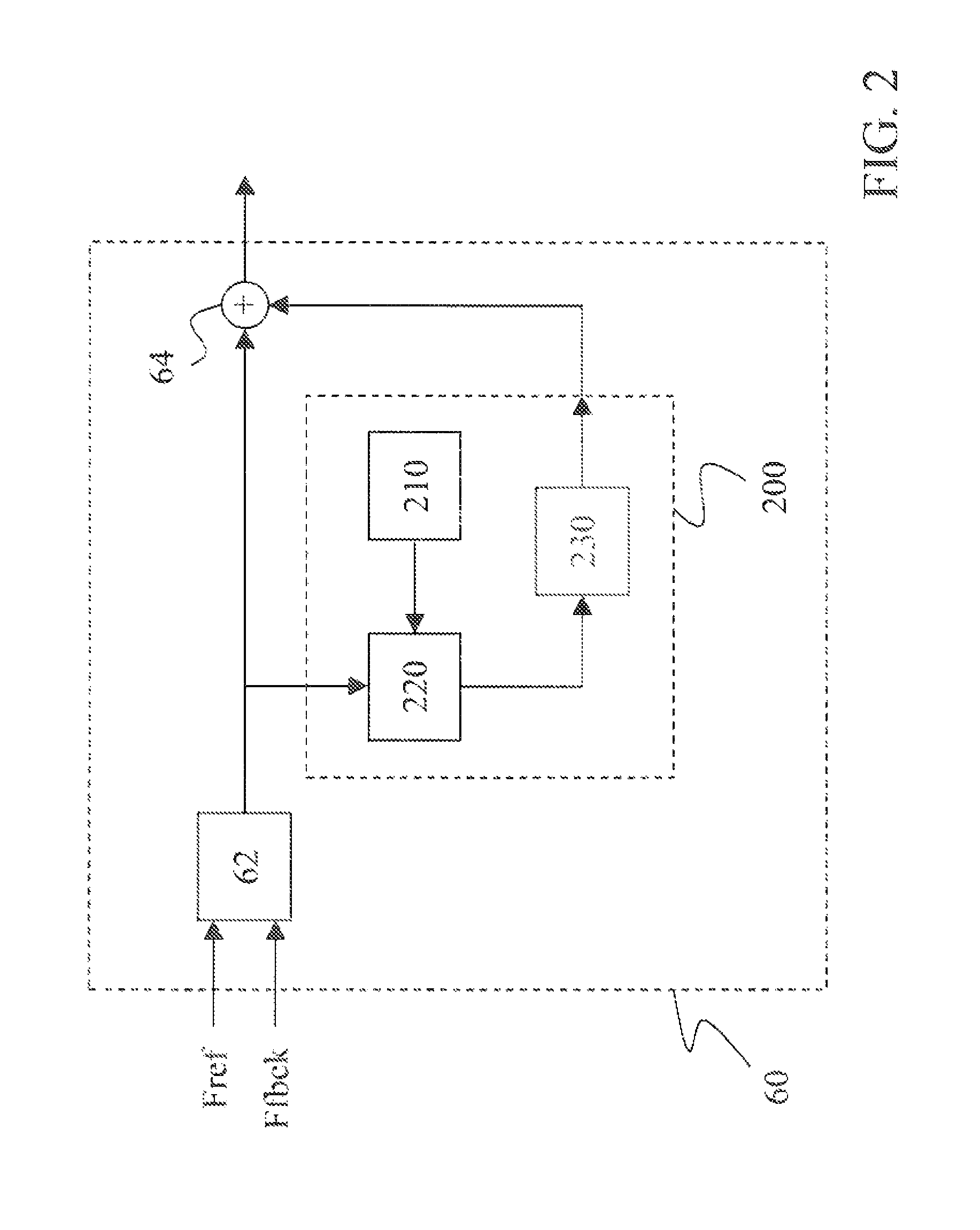Fast-locking bang-bang PLL with low ouput jitter
a phase detector and fast lock technology, applied in the field of phaselocked loops, can solve the problems of low output jitter, analog pd has the disadvantage of only giving information on the mathematical sign or polarity of the phase error rather than on the signed magnitude, and achieves the effect of improving jitter (phase noise) performance in lock, fast lock times, and low cos
- Summary
- Abstract
- Description
- Claims
- Application Information
AI Technical Summary
Benefits of technology
Problems solved by technology
Method used
Image
Examples
first embodiment
[0058]As depicted in FIG. 4a corresponding to the first embodiment, the sign detector 210 of FIG. 2 may be comprised of a delay element 211 and a comparator 212. In this case, the sign change at the BBPD output can be detected by the delay element 211, which delays the BBPD output by one reference clock period, together with the comparator 212, which compares the BBPD output and the delayed BBPD output and delivers the reset signal as a comparison result when a difference between those both outputs is detected.
second embodiment
[0059]As depicted in FIG. 4b corresponding to the second embodiment, the sign detector 210 of FIG. 2 may be comprised of a sign indicator 213 and a comparator 214. In this case, the sign change at the BBPD output can be detected by the sign indicator 213, which indicates the sign + or − of the count value output by the counter 220, together with the comparator 214, which compares the sign of the BBPD output with the sign of the count value and delivers the reset signal as a comparison result when a sign difference is detected.
third embodiment
[0060]As depicted in FIG. 4c corresponding to the third embodiment, the sign detector 210 of FIG. 2 may be comprised of a multiplier 215 and a comparator 216. In this case, the sign change at the BBPD output can be detected by the multiplier 215, which generates the mathematical product of the BBPD output with the count value, together with the comparator 216, which is configured to determine whether this mathematical product is less than zero (i.e. <0) and to deliver the reset signal if the response is affirmative, namely if the mathematical product is strictly negative.
[0061]As a variant to the third embodiment of FIG. 4c for detecting the sign change at the BBPD output, the comparator 216 may be replaced with another comparator 217 (not represented), which is configured to determine whether the mathematical product of the BBPD output and the count value is less than or equal to zero (i.e. ≦0) and to deliver the reset signal if the response is affirmative, namely if the mathematic...
PUM
 Login to View More
Login to View More Abstract
Description
Claims
Application Information
 Login to View More
Login to View More - R&D
- Intellectual Property
- Life Sciences
- Materials
- Tech Scout
- Unparalleled Data Quality
- Higher Quality Content
- 60% Fewer Hallucinations
Browse by: Latest US Patents, China's latest patents, Technical Efficacy Thesaurus, Application Domain, Technology Topic, Popular Technical Reports.
© 2025 PatSnap. All rights reserved.Legal|Privacy policy|Modern Slavery Act Transparency Statement|Sitemap|About US| Contact US: help@patsnap.com



